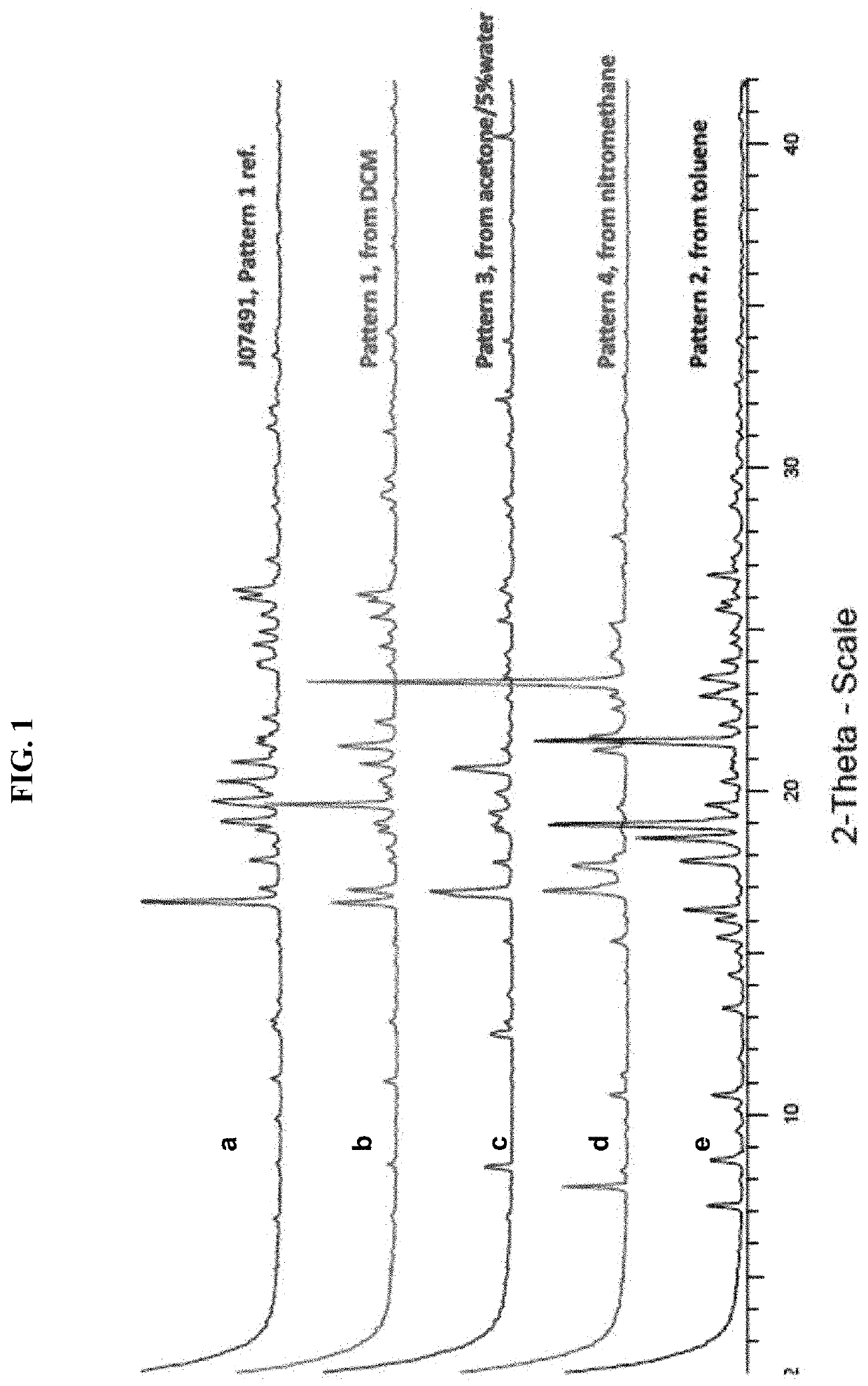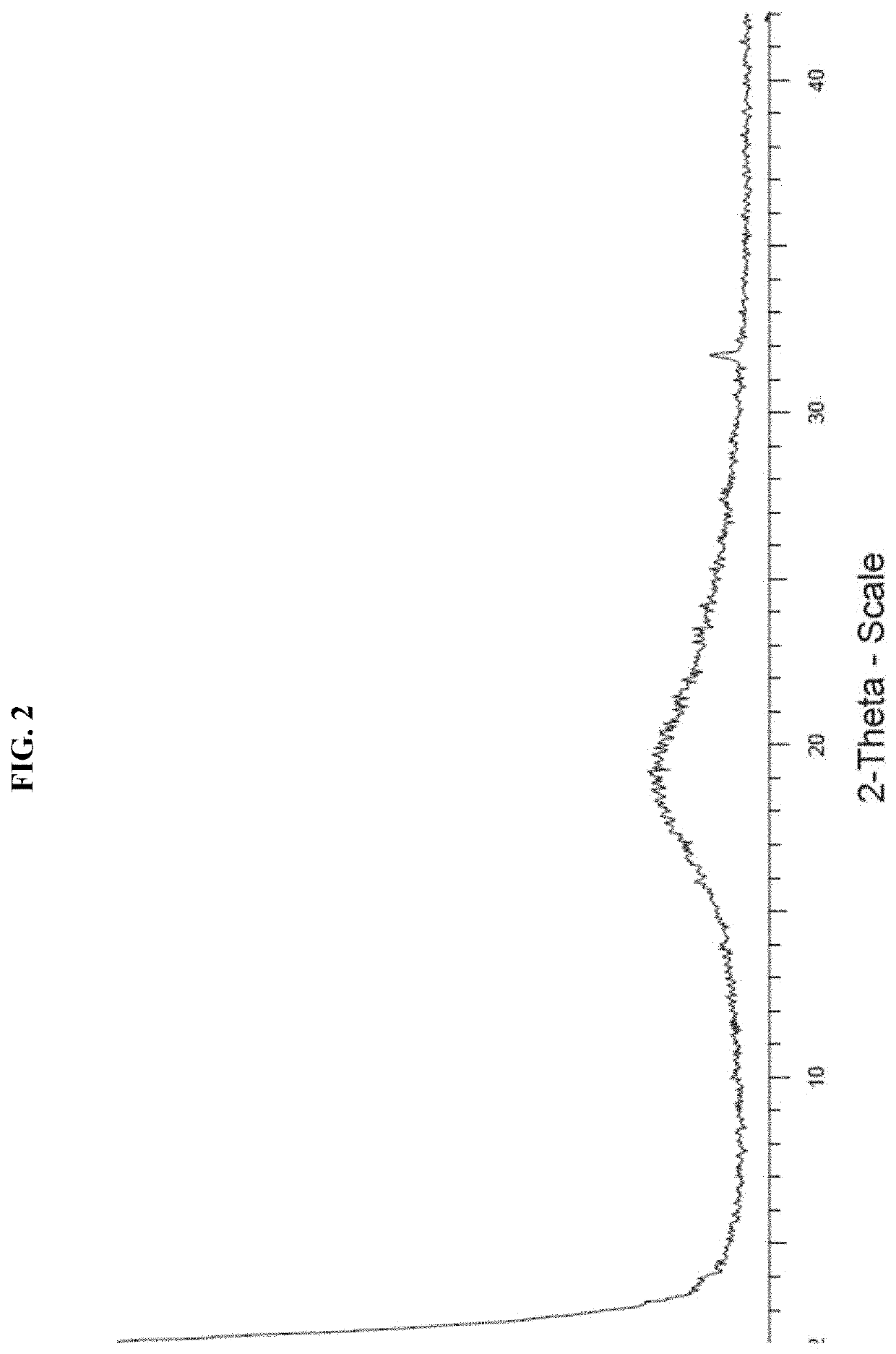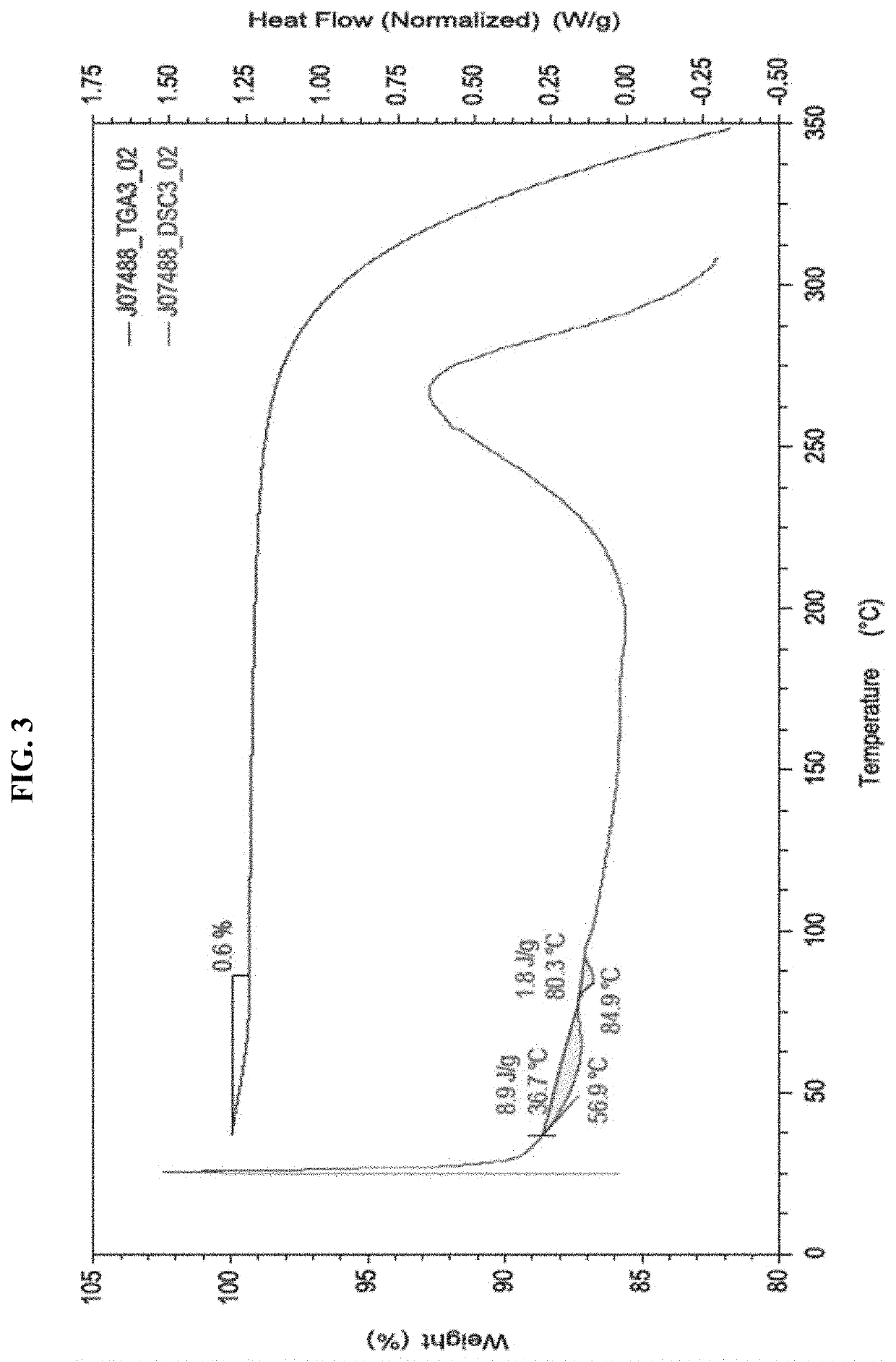EBNA1 inhibitor crystalline forms, and methods of preparing and using same
a technology of ebna1 inhibitor and crystalline form, which is applied in the field of human gammaherpesvirus, can solve the problems of drug or immunological response, no herpesvirus antiviral is effective at blocking, and high carcinogenic risk of ebv infection, and achieve the effect of preventing lytic and/or latent ebv infection
- Summary
- Abstract
- Description
- Claims
- Application Information
AI Technical Summary
Benefits of technology
Problems solved by technology
Method used
Image
Examples
example 1
f Crystalline Forms of (I) Free Base
1.1. Purification of Supplied Amorphous (I) Free Acid:
[0163]Procedure A: (I) free acid (ca. 75 mg) was suspended in water (10 vol, 750 μl). The solid did not wet well, and therefore the mixture was shaken thoroughly prior to stirring at 25° C. for 2 hours. The solid was then isolated by filtration (gravity, aided by an air flow). The material was analyzed by XRPD and IC.
[0164]Procedure B: (I) free acid (ca. 750 mg) was suspended in water (10 vol, 7.5 ml). The mixture was shaken thoroughly and stirred at 25° C. for 30 minutes. The suspension was split into two vials. The solids were filtered by gravity or suction and then dried under vacuum. The two batches were analyzed by IC, HPLC and XRPD.
[0165]A XRPD trace for amorphous (I) free base is illustrated in FIG. 2.
1.2. Preliminary Solubility Assessment and Crystallization Screen:
[0166]Amorphous (I) free acid (post washing, ca. 20 mg) was dissolved or suspended in a range of solvent systems (using 10 ...
example 2
[0194]As described elsewhere herein, a salt screening study identified 4 crystalline solvated forms of the (I) free base from DCM, toluene, acetone and nitromethane. A batch of (I) free acid, which was crystallized from EtOH / EtOAc, yielded another crystalline form (Pattern 5).
[0195]An illustrative non-limiting recrystallization process for (I) free acid involved dissolution in ethyl acetate (3.0 vol.) and ethanol (1.0 vol.) at 60-70° C. The solution was then cooled to 25-30° C. over a period of 1 h and stirred for 18 h. After 18 h, the mixture was further cooled to 0-5° C. and stirred for 6 h. The crystallized solids were filtered and dried.
2.1. Characterization of Supplied Material:
[0196]The received material (I) free acid was characterized using a wide range of techniques to investigate the solid form properties. A summary of the results is shown in Table 12.
[0197]Solid state characterization confirmed that the (I) free acid batch was crystalline (Pattern 5), non-solvated, non-hyg...
PUM
| Property | Measurement | Unit |
|---|---|---|
| melting point | aaaaa | aaaaa |
| melting point | aaaaa | aaaaa |
| temperatures | aaaaa | aaaaa |
Abstract
Description
Claims
Application Information
 Login to View More
Login to View More - R&D
- Intellectual Property
- Life Sciences
- Materials
- Tech Scout
- Unparalleled Data Quality
- Higher Quality Content
- 60% Fewer Hallucinations
Browse by: Latest US Patents, China's latest patents, Technical Efficacy Thesaurus, Application Domain, Technology Topic, Popular Technical Reports.
© 2025 PatSnap. All rights reserved.Legal|Privacy policy|Modern Slavery Act Transparency Statement|Sitemap|About US| Contact US: help@patsnap.com



